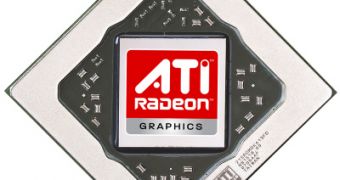While DirectX 10.0 compliant hardware from Advanced Micro Devices' graphics division came a little too late to the party and missed most chances to dominate the market, the DirectX 10.1 supporting graphics processing units from the very same manufacturing company are coming in fast and they promise better performance and features at lower prices.
Codenamed ATI RV670, the new generation of graphics processing units from Advanced Micro Devices is intended to further enhance the performance per dollar ratio of the company and it is aimed at providing the best yet seen balance between price, performance, power consumption and features, according to the news site xbitlabs, that cites an AMD presentation. While the current performance to mainstream product from AMD, the ATI Radeon HD 2900 Pro brings a lot of new features and a high performance level at an affordable price, the next generation of graphics processing units should deliver an even better list of features and traits.
The RV670 graphics processing units will be used to augment the ATI Radeon HD 2000 series of graphics cards and they are said to offer better performance, thermal and power management while being DirectX 10.1 and Shader Model 4.1 compatible. Along with these features, the new GPUs from AMD will also provide enhanced functionality thanks to the integrated universal video decoder. While natively supporting the PCI Express 2.0 and DisplayPort interfaces.
The new RV670 will be made using the 55 nanometer fabrication process and the actual manufacturing will be done at TSMC. Internally, it will feature 320 unified shader processors, just like the top of the line current offerings from AMD, but it is not yet known if the new chips will sport the same 512-bit memory interface, or if the manufacturing company will switch to the 256-bit wide one, while increasing the relative performance of the GDDR4 dedicated video memory modules.
The official date for launching these new graphics processing units is set in November, but the manufacturing company may very well postpone it in order to synchronize it with the launch of its Phenom class of central processing units in an attempt to dominate a significant part of the gaming market segment.

 14 DAY TRIAL //
14 DAY TRIAL //